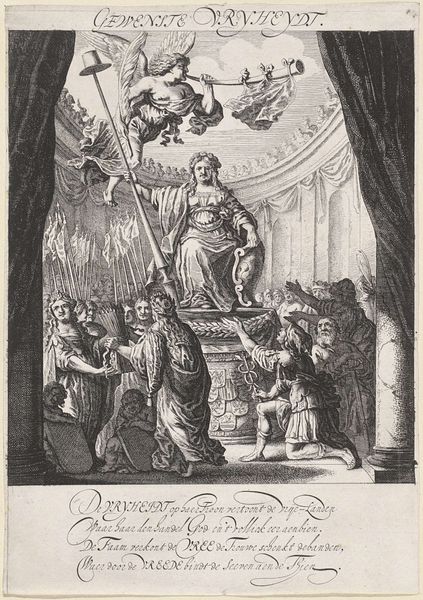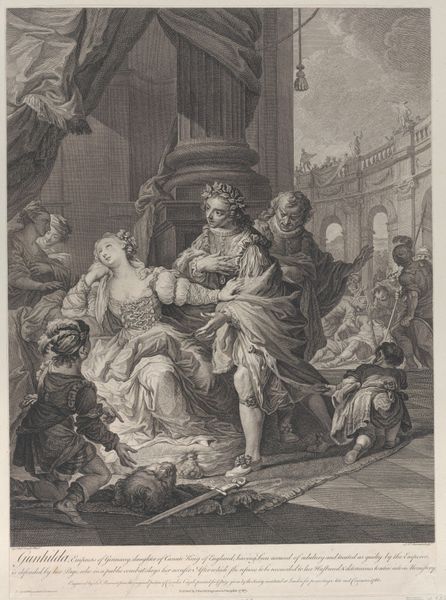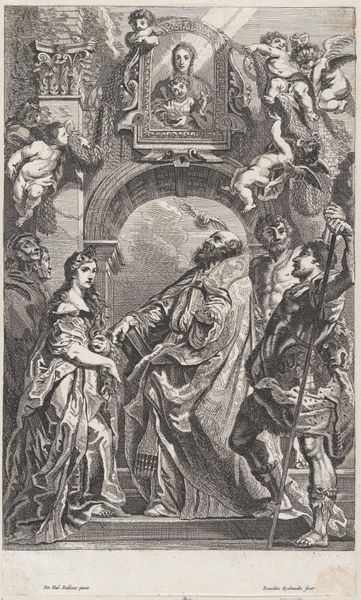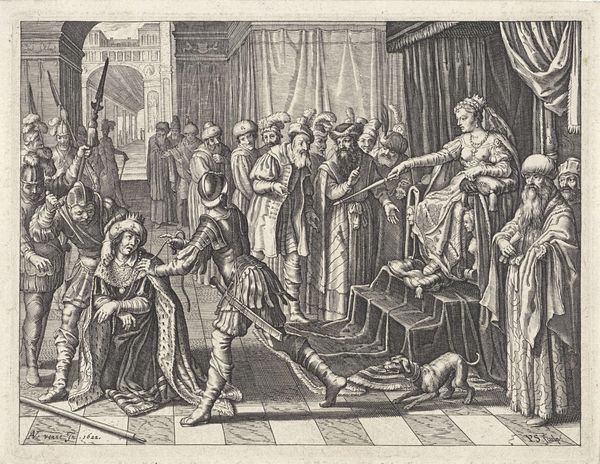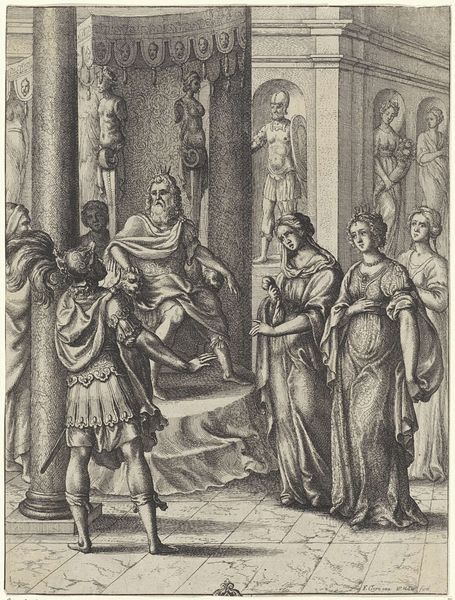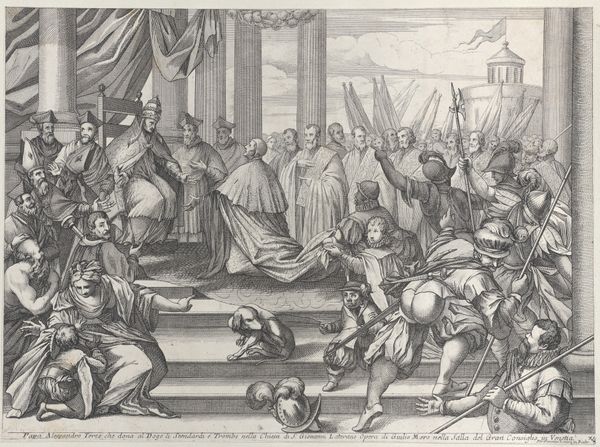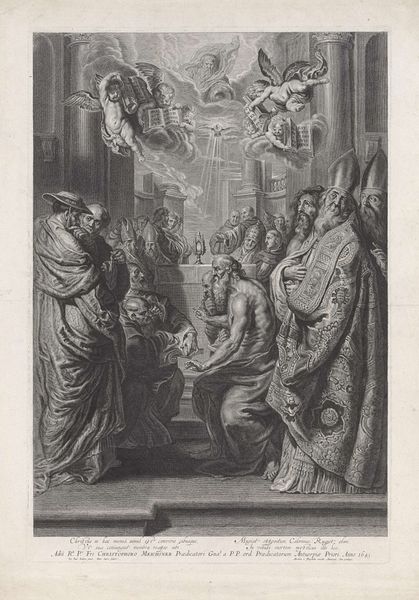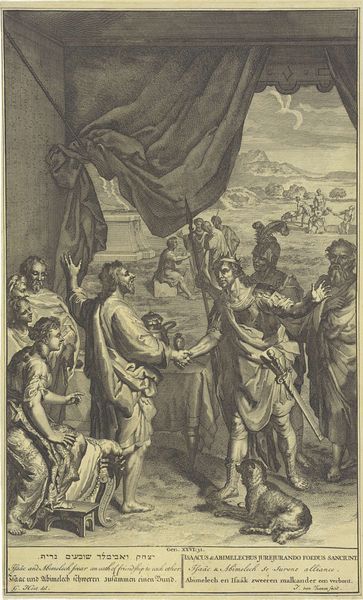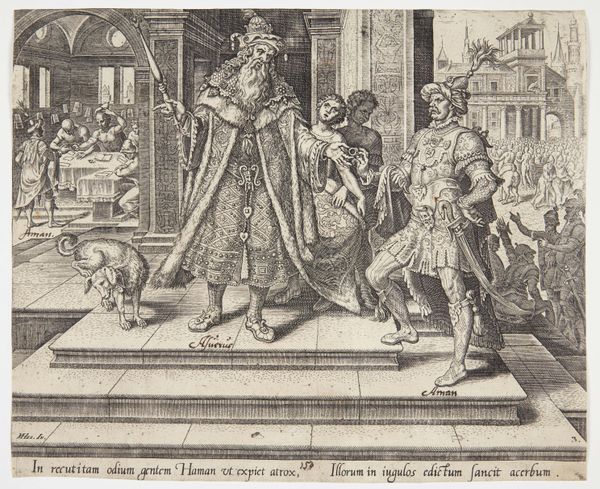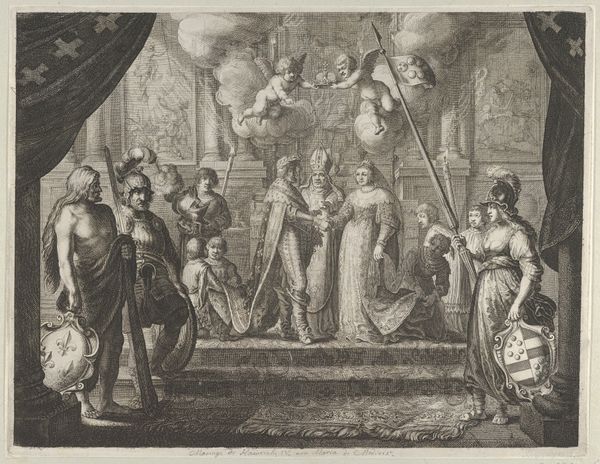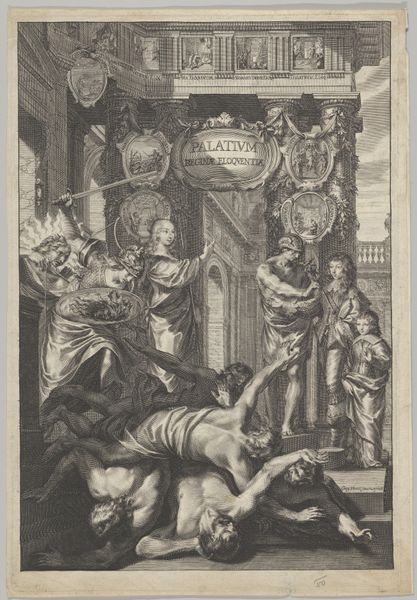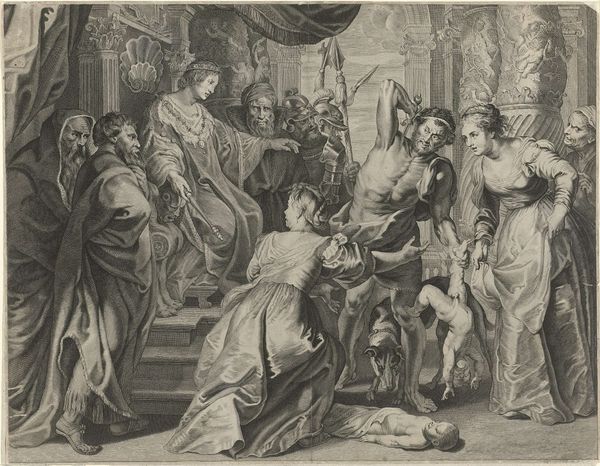
Plate 21: Emperor Charles V being offered the keys of Saxony and Hesse; from Guillielmus Becanus's 'Serenissimi Principis Ferdinandi, Hispaniarum Infantis...' 1636
0:00
0:00
drawing, print, engraving
#
drawing
#
allegory
#
baroque
# print
#
figuration
#
history-painting
#
engraving
Dimensions: Sheet (Trimmed): 15 1/2 × 11 15/16 in. (39.3 × 30.4 cm)
Copyright: Public Domain
Curator: What strikes me immediately is how utterly imposing this print feels. All that weight, all that ornamentation... It's suffocating! Editor: I can see that. This is "Plate 21: Emperor Charles V being offered the keys of Saxony and Hesse" by Anton van der Does, created around 1636. It is currently held at the Metropolitan Museum of Art. This engraving is from Guillielmus Becanus’s "Serenissimi Principis Ferdinandi, Hispaniarum Infantis..." The whole scene presents an idealized and symbolic depiction of power and submission. Curator: Submission is the key word. Look at those figures groveling at the base of the stairs, offering up keys! It’s the very image of dominance, Baroque style. Is this historical record or political fantasy? Editor: The historical element cannot be dismissed, the Baroque period, of which this is an example, certainly favored grandeur to illustrate power and legitimacy. What appears idealized for you is also rooted in representations of political control—territories changing hands as the leaders negotiate power. There are levels of truth-telling embedded. The inclusion of putti also suggests divine endorsement of Emperor Charles' reign, reinforcing this notion. Curator: Divinity and earthly power conveniently hand-in-hand, wouldn’t you agree? Those putti look less like messengers of God and more like winged spin doctors. What's interesting about the print is its sheer density; the detail overwhelms the narrative, creating a propaganda effect, or even undermining the narrative altogether. I lose the message in all the fuss. Editor: I think you have a point. Its abundance, though impressive from a technical standpoint, can definitely feel staged and somewhat overbearing. However, for audiences of that time, it might have been a powerful message. Curator: Perhaps so. Looking at it through that lens, it regains some persuasive power for sure. Editor: Indeed. And there's the brilliance of this piece to be honest. That Anton van der Does so deftly distilled an ideology into an image. Curator: I'll concede it is skillful; heavy-handed and all. What started out for me a stifling and crowded, now reveals a calculated vision of sovereignty in a troubled historical setting. It is about the illusion, as well as a physical assertion, of power. Thank you.
Comments
No comments
Be the first to comment and join the conversation on the ultimate creative platform.
